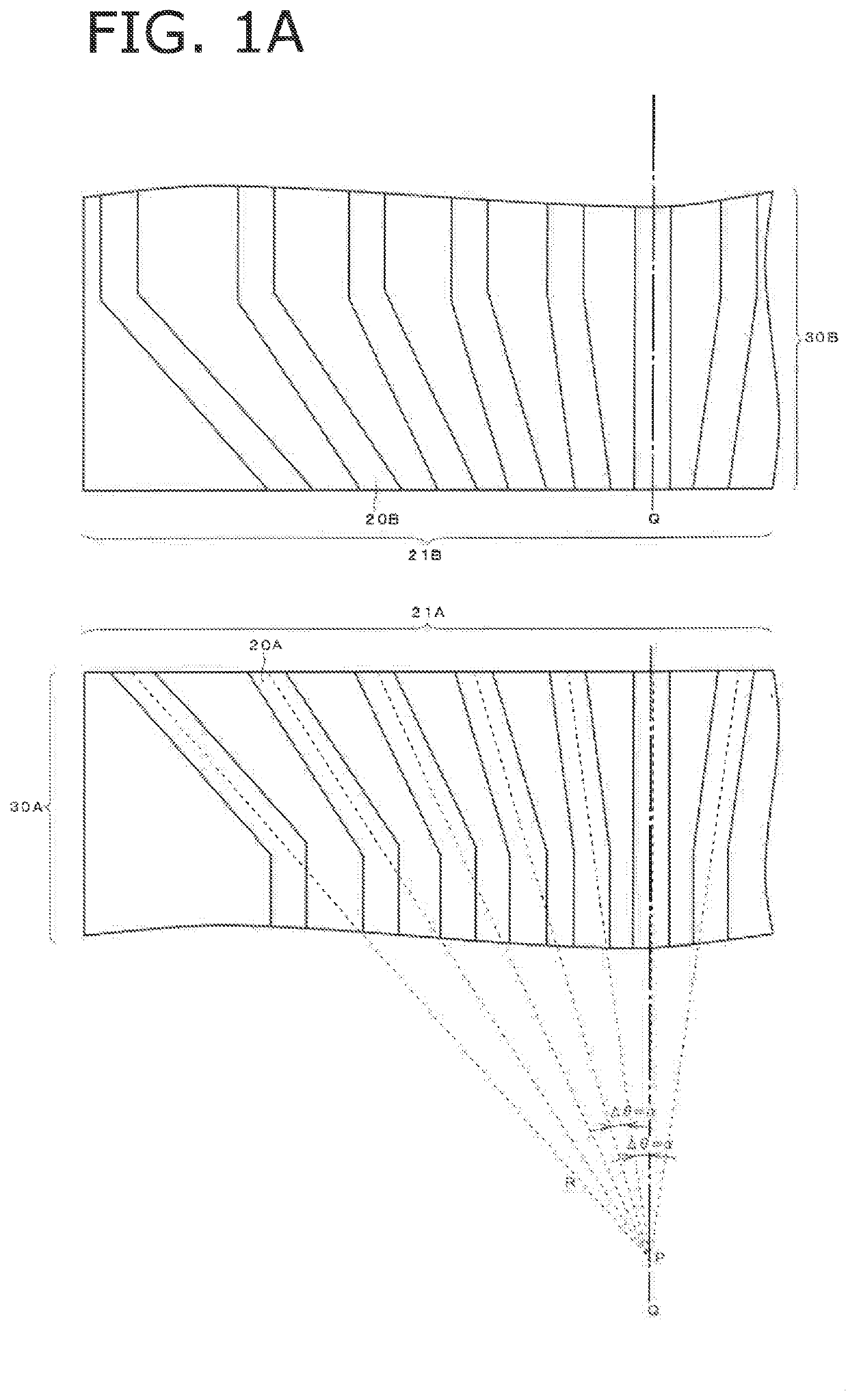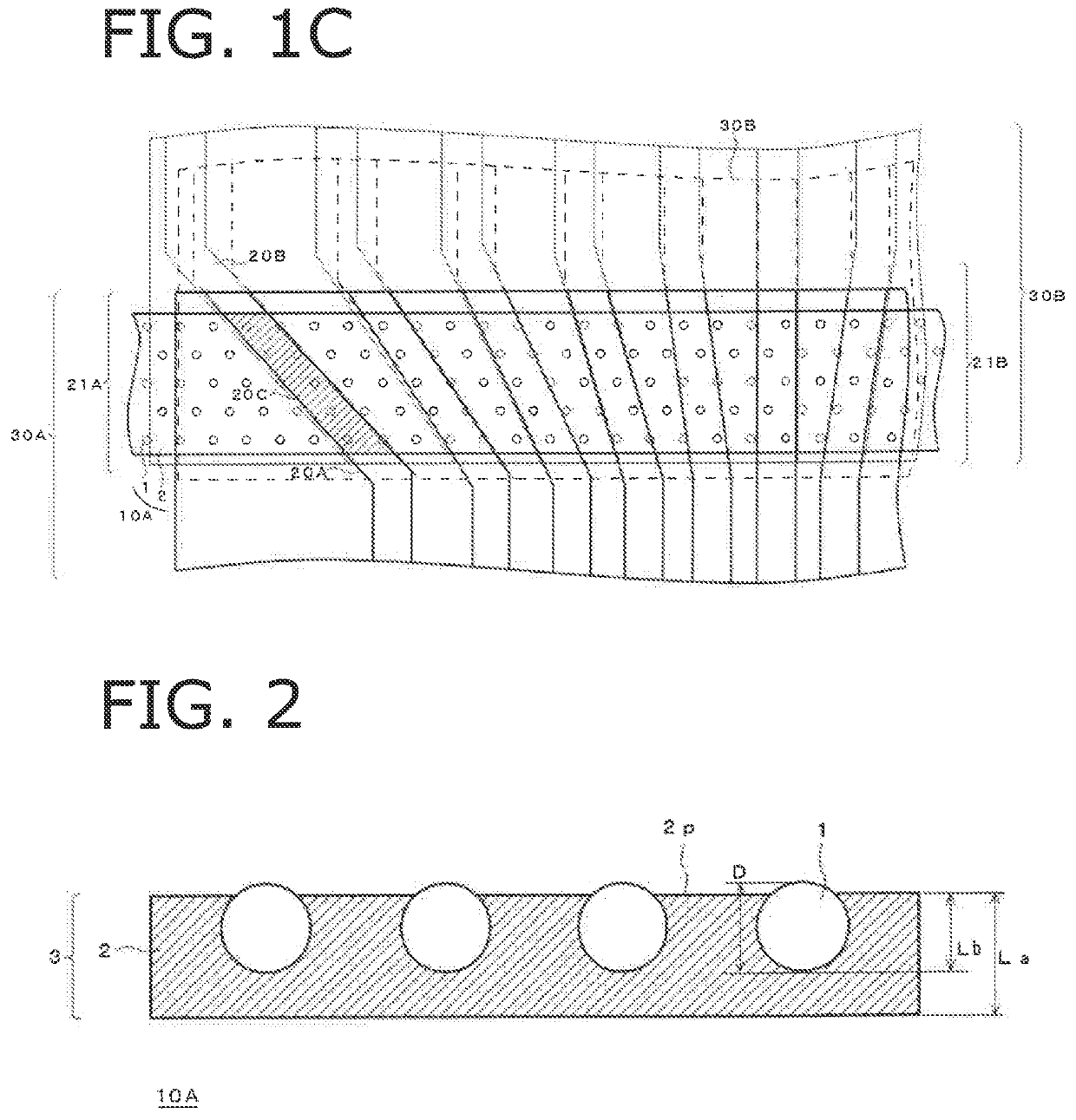Connection structure
- Summary
- Abstract
- Description
- Claims
- Application Information
AI Technical Summary
Benefits of technology
Problems solved by technology
Method used
Image
Examples
example 1
[0145]In the case of producing a connection structure in which terminal patterns having radially arranged terminals were connected to each other, the number of conductive particles captured by each terminal was determined by overlapping the terminal patterns having the radially arranged terminals and a particle arrangement by drawing figures. The connection structure was determined to be OK when the terminal captured three or more conductive particles at the minimum, and determined to be NG when the terminal captured less than three conductive particles.
[0146]In this case, a first electronic component had a terminal pattern of the following form.
[0147](1) As a terminal pattern 21, as shown in FIG. 8A, a radial arrangement having two terminals was presumed.
[0148](2) The angle α formed between a center line Q of the terminal pattern 21 and a center line R extending in a long-side direction of a terminal 20 was varied by angles of 0.01 to 1°, and a maximum value αmax was set to 14°.
[01...
example 2
[0157]The number of conductive particles captured by the terminal was determined by drawing figures, using the same terminal pattern as that in Example 1 in the same manner as that in Example 1.
[0158]In an anisotropic conductive film, conductive particles had a particle diameter of 3.2 μm, a square lattice disposition, and an interstitial distance (distance between centers of conductive particles) of 10 μm.
[0159]As a result, in a case where the center line R of the terminal 20 was inclined to the maximum value αmax, the minimum capture number of the conductive particles by the terminal 20 was evaluated to be OK, and there was no instance in which the terminal 20 captured no conductive particles, even if the angle formed between the center line Q and the center line R took any value.
example 3
[0162]The number of conductive particles captured by a terminal was determined by drawing figures, using the same terminal pattern as that in Example 1 in the same manner as that in Example 1. However, an anisotropic conductive film had the following conductive particle disposition.
[0163]Namely, the anisotropic conductive film had a multiple circular region illustrated in FIG. 5B. In this case, the multiple circular region had the following specifications.
[0164]The diameter of a first concentric circle was 20 μm.
[0165]The distance L2 between the centers of the conductive particles on each concentric circle was 10 μm.
[0166]The distance L3 between concentric circles was 10 μm.
[0167]The angle θ formed between a first line 23a and a second line 23b was 5°.
[0168]A cutout rectangular region was a square the side of which was 100 μm.
[0169]As a result, the minimum capture number of the conductive particles by the terminal was evaluated to be OK.
[0170]Note that, as illustrated in FIG. 8B, wh...
PUM
| Property | Measurement | Unit |
|---|---|---|
| Area | aaaaa | aaaaa |
| Density | aaaaa | aaaaa |
| Electrical conductor | aaaaa | aaaaa |
Abstract
Description
Claims
Application Information
 Login to View More
Login to View More - R&D
- Intellectual Property
- Life Sciences
- Materials
- Tech Scout
- Unparalleled Data Quality
- Higher Quality Content
- 60% Fewer Hallucinations
Browse by: Latest US Patents, China's latest patents, Technical Efficacy Thesaurus, Application Domain, Technology Topic, Popular Technical Reports.
© 2025 PatSnap. All rights reserved.Legal|Privacy policy|Modern Slavery Act Transparency Statement|Sitemap|About US| Contact US: help@patsnap.com



